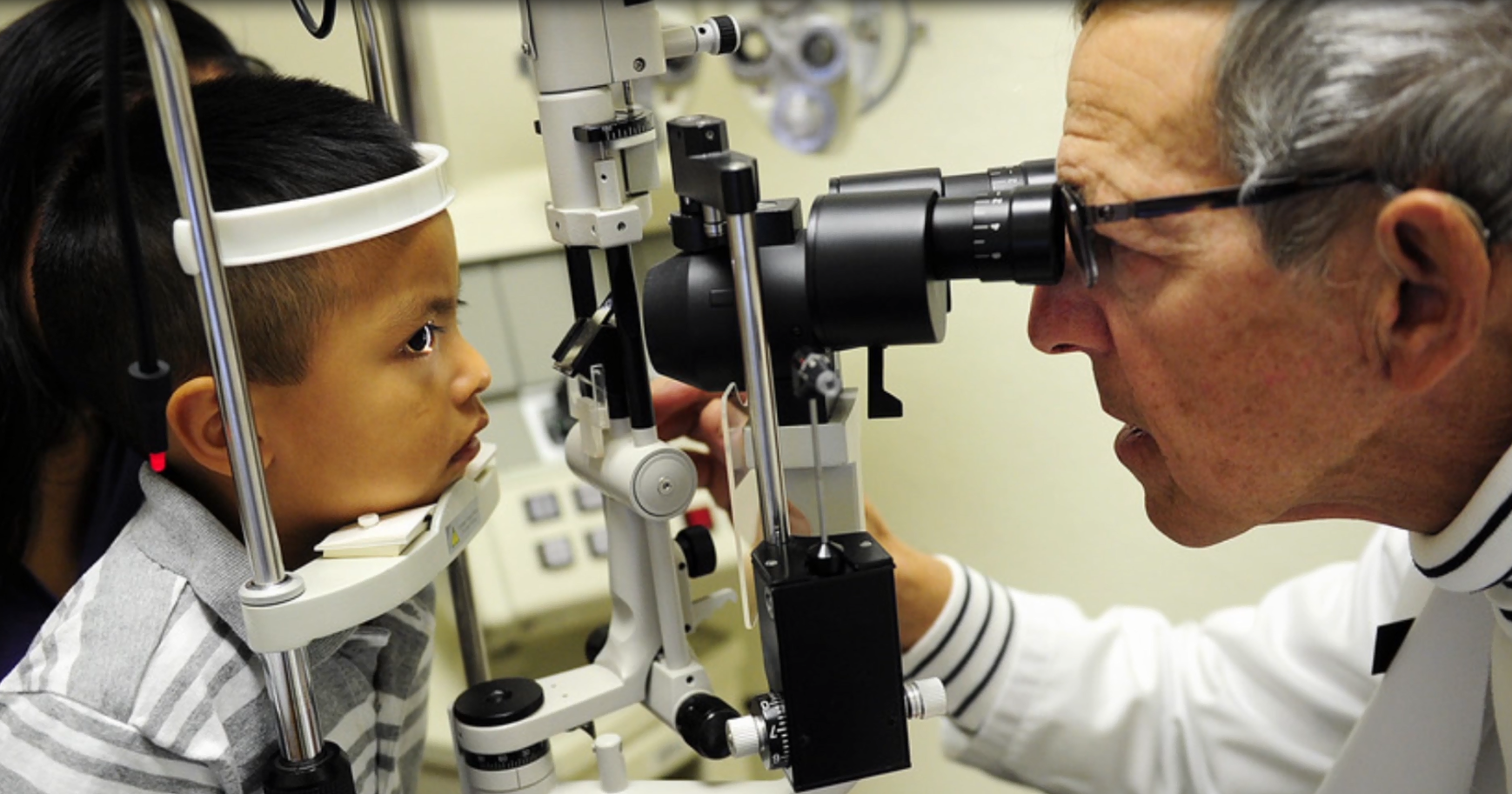 May. 182015
May. 182015Healthy Vision Month – An Interview with Dr. Howard Freedman
The Children’s Vision Initiative of the Naples Children & Education Foundation addresses pediatric vision challenges among at-risk youth in Collier County.
With May designated as national Healthy Vision Month, we posed several questions about pediatric vision care to Dr. Howard Freedman, Medical Director of the Bonita Springs Lions Eye Clinic and one of the lead pediatric ophthalmologists from NCEF’s Children’s Vision Initiative.
At what ages should a child’s vision be examined?
Screenings should occur at ages 0-1, ages 1-3, ages 3-5, and every two years after age 5. There are visual acuity thresholds at ages 36-47 months and at 48-59 months. Children who fail should be referred to an eye specialist (ophthalmologist or optometrist).
How does a child’s vision change over time and what are symptoms of those changes?
Children are normally farsighted (hyperopic) from birth to around age 9, which is when the rapid growth of the eye and body may cause some children to develop nearsightedness (myopia). Nearsighted children may not be able to see the board at school and need glasses. Some children are born with astigmatism, which causes distorted vision, and will need glasses to sharpen their vision. It is important to detect and address these problems in preschool so the children can get glasses and other treatments that will allow them to see well in school and for the rest of their lives.
Another common eye problem in children is misaligned eyes (strabismus), where one eye can drift in, out, up or down. This causes poor depth perception and sometimes lazy eye (amblyopia) and needs corrective treatment (glasses, eye exercises or surgery). Infantile cataracts, which are rare, need to be treated promptly in early infancy or children will never develop good vision in the affected eyes.
How does a child’s vision affect his/her success at school given diagnoses of low vision, nearsightedness or other conditions?
Children with subnormal vision can have problems seeing the board and/or difficulty with reading. Eye strain and headaches from eye problems can interfere with concentration and learning. Some children have dyslexia and a difficulty reading and understanding written materials. Visual aids to magnify the letters can allow children with low vision to succeed in seeing their schoolwork.
What medical resources are available if a parent suspects a vision change in his/her child?
If an eye problem is suspected, or if there is a strong family history of eye problems in children, then the parent should contact the child’s pediatrician for a checkup and referral to an eye specialist as soon as possible. Eye screenings are done at most preschools, some doctor’s offices and at school. Some ophthalmologists and optometrists specialize in pediatric eye problems. Low vision problems can be helped at Lighthouse of Collier and by some eye doctors who specialize in low vision assessments and treatments.





